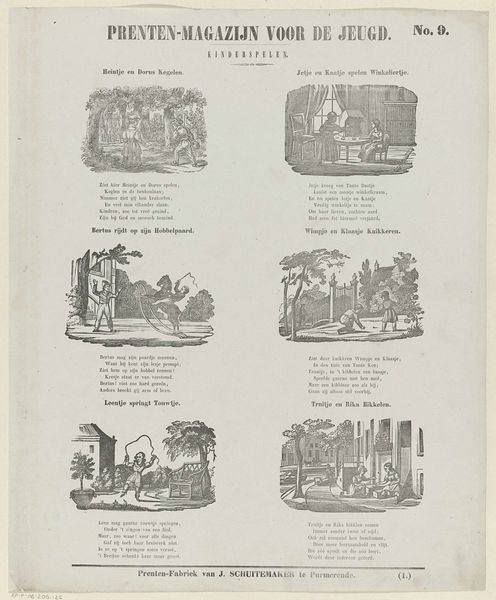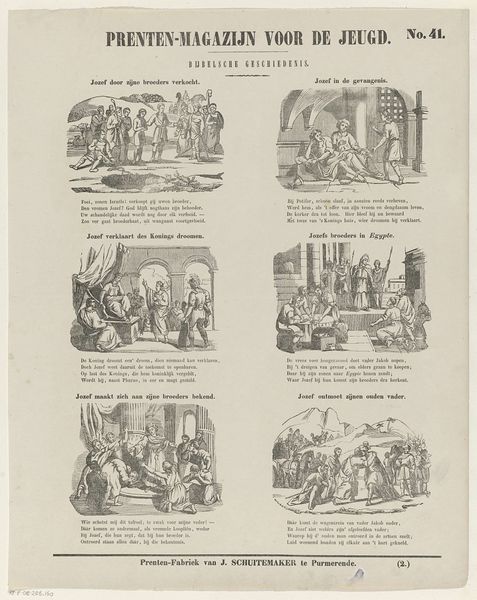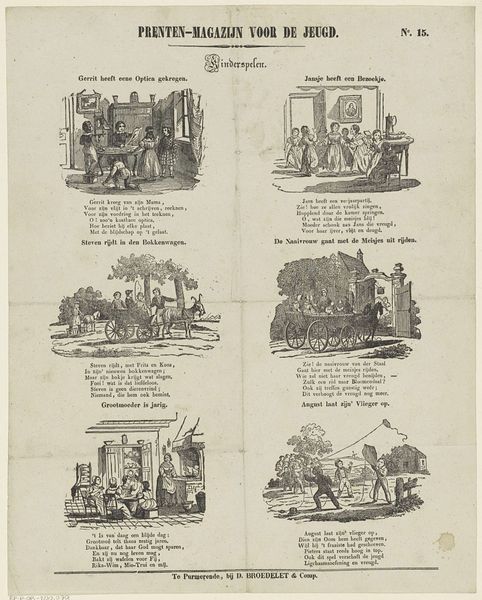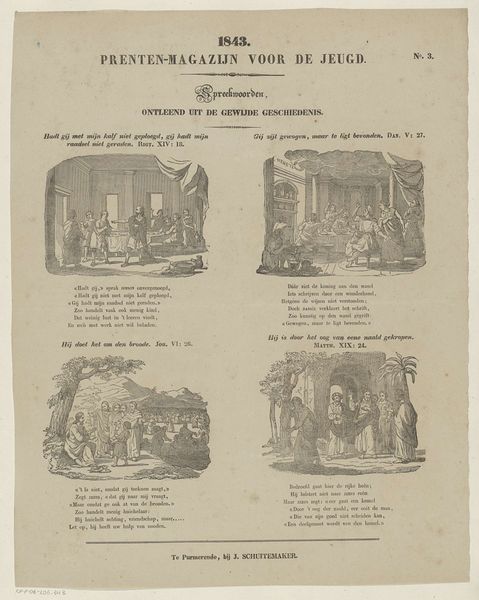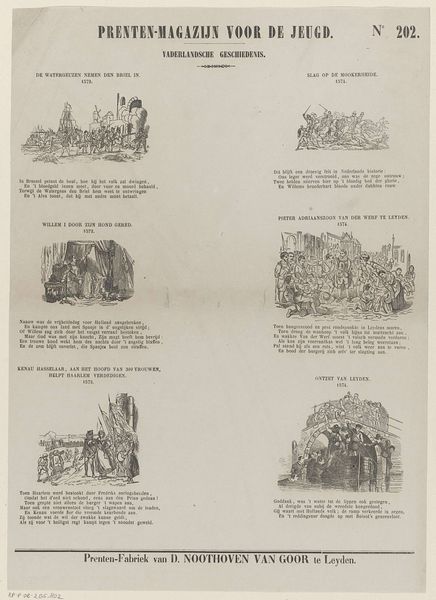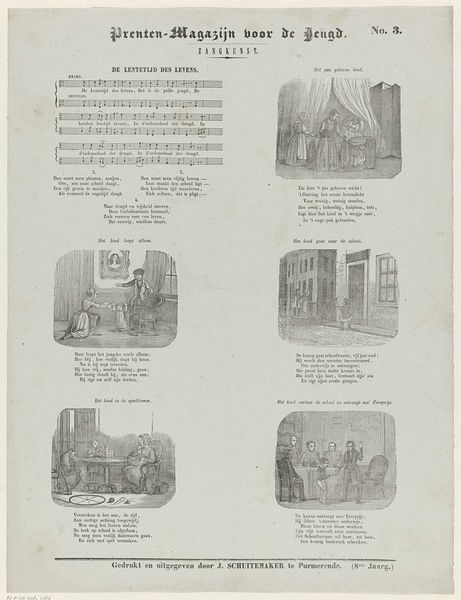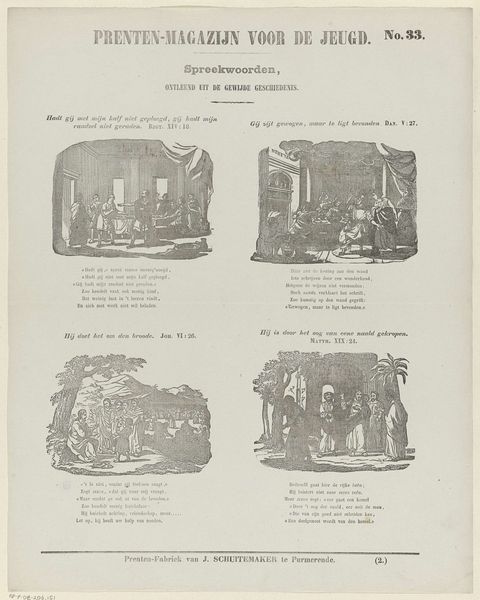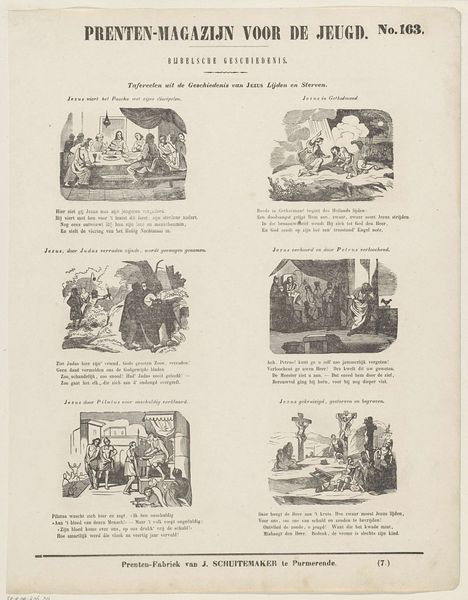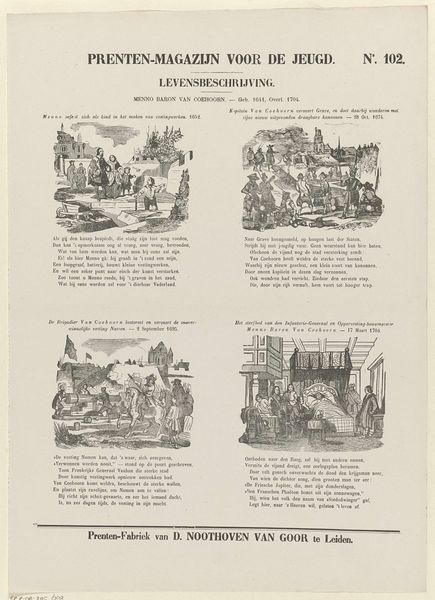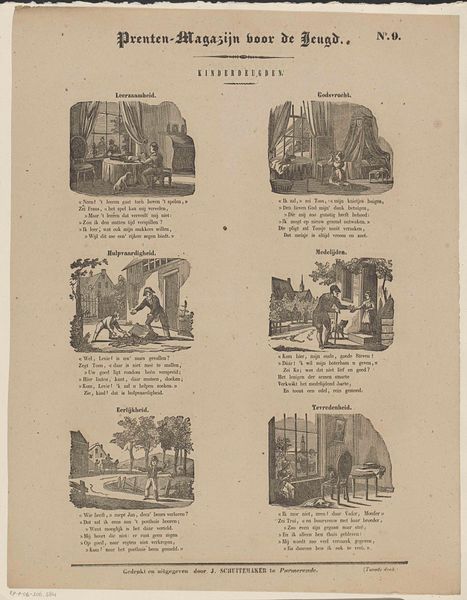
print, engraving
#
narrative-art
#
dutch-golden-age
# print
#
landscape
#
cityscape
#
genre-painting
#
northern-renaissance
#
engraving
Dimensions: height 430 mm, width 338 mm
Copyright: Rijks Museum: Open Domain
Editor: This is "Kinderspelen," or "Children's Games," an 1842 engraving by Jan Schuitemaker. It depicts several little scenes of children playing. The whole piece has a storybook quality. What strikes me most is how this image reproduces childhood activities and packages them for a child audience - almost like a catalogue or instruction manual. What do you make of that? Curator: Precisely. Notice the mass-produced nature of an engraving and how it disseminates ideas of play. Schuitemaker, by "printing" play, turns it into a consumable, a lesson even. It implies that childhood itself, in this era, becomes standardized. Editor: Standardized how? I suppose, it's not only recording "folk games" but transforming them into some higher form? Curator: Look at the details. Each scene is carefully framed, almost staged, presented in a visually digestible format. Think of the socio-economic factors driving this. Who could afford such a print? Whose childhood is being depicted and, by extension, valued? Does that influence the kinds of “acceptable” play depicted here? Editor: It seems more staged now that you mention that - middle class children or children being 'civilized'. Is it about containing childhood to protect and educate? Curator: That's one perspective. The material reality - the print, its accessibility - shapes our understanding of how childhood was being molded, perhaps commodified. Think of the paper, the ink, the very act of printing itself, reinforcing ideas. This seemingly innocent image speaks volumes about labour, class, and the social construction of childhood. Editor: I see that! What seemed quaint is actually quite revealing about the economics and social values that dictated the childhood experience at the time this print was produced. It feels almost like the 'maker movement' equivalent for children, using inexpensive prints instead of plastic! Curator: Exactly! The very act of reproduction creates a lens through which we can understand childhood as not a universal experience but rather a product of its material circumstances.
Comments
No comments
Be the first to comment and join the conversation on the ultimate creative platform.


